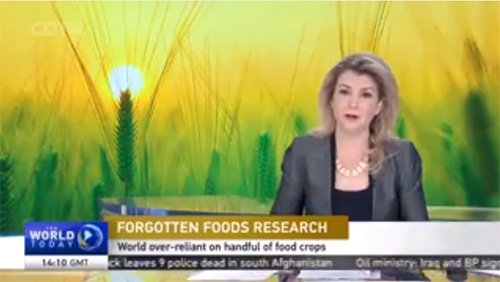 Here's a startling statistic: Just four food crops - wheat, soya, maize and rice - supply half of the world's total food needs. Yet over the course of history, humans have grown something like seven-thousand crops. Most of them are now long forgotten or grown in small quantities. But researchers at a centre in Malaysia believe some of these forgotten foods could help to sustain humanity in the future, especially in the face of a changing climate. Rian Maelzer visited the Crops for the Future centre just outside Kuala Lumpur, and serves up this story.
Here's a startling statistic: Just four food crops - wheat, soya, maize and rice - supply half of the world's total food needs. Yet over the course of history, humans have grown something like seven-thousand crops. Most of them are now long forgotten or grown in small quantities. But researchers at a centre in Malaysia believe some of these forgotten foods could help to sustain humanity in the future, especially in the face of a changing climate. Rian Maelzer visited the Crops for the Future centre just outside Kuala Lumpur, and serves up this story.
These climate-friendly domes house Crops for the Future, a centre seeking out and researching non-major food crops of the world in partnership with the University of Nottingham and the Malaysian government.
PROF. SAYED AZAM-ALI CEO, CROPS FOR THE FUTURE "The whole point of CFF is to provide viable, credible alternatives that have commercial and market potential. We have to make uses of these plants and make them into products that people will buy and consume and cherish. Those are the plants that we no longer see in supermarkets. We don't see products from them. But we have memories of them. Let's go back and look at some of those and test them. If we can test them and see which of those foods and nutrition and products we can get from them will be suitable because the crops that they come from would be the crops that we can see as being climate resilient crops."
One promising example is the Bambara groundnut, which can grow in poor, acidic soils.



